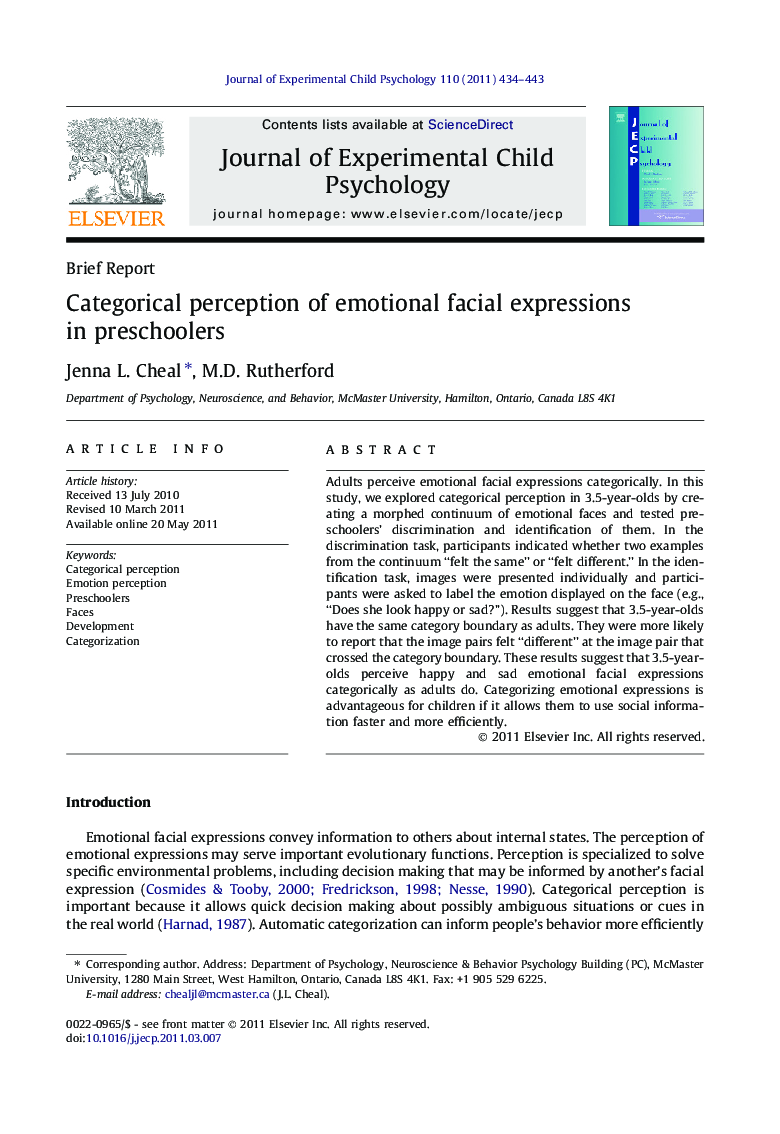| Article ID | Journal | Published Year | Pages | File Type |
|---|---|---|---|---|
| 918413 | Journal of Experimental Child Psychology | 2011 | 10 Pages |
Adults perceive emotional facial expressions categorically. In this study, we explored categorical perception in 3.5-year-olds by creating a morphed continuum of emotional faces and tested preschoolers’ discrimination and identification of them. In the discrimination task, participants indicated whether two examples from the continuum “felt the same” or “felt different.” In the identification task, images were presented individually and participants were asked to label the emotion displayed on the face (e.g., “Does she look happy or sad?”). Results suggest that 3.5-year-olds have the same category boundary as adults. They were more likely to report that the image pairs felt “different” at the image pair that crossed the category boundary. These results suggest that 3.5-year-olds perceive happy and sad emotional facial expressions categorically as adults do. Categorizing emotional expressions is advantageous for children if it allows them to use social information faster and more efficiently.
► Preschoolers have the same category boundary as adult when categorizing happy and sad faces. ► Preschoolers show categorical perception of happy and sad faces. ► Preschoolers discriminate happy and sad faces similarly to adults, but to a lesser degree.
